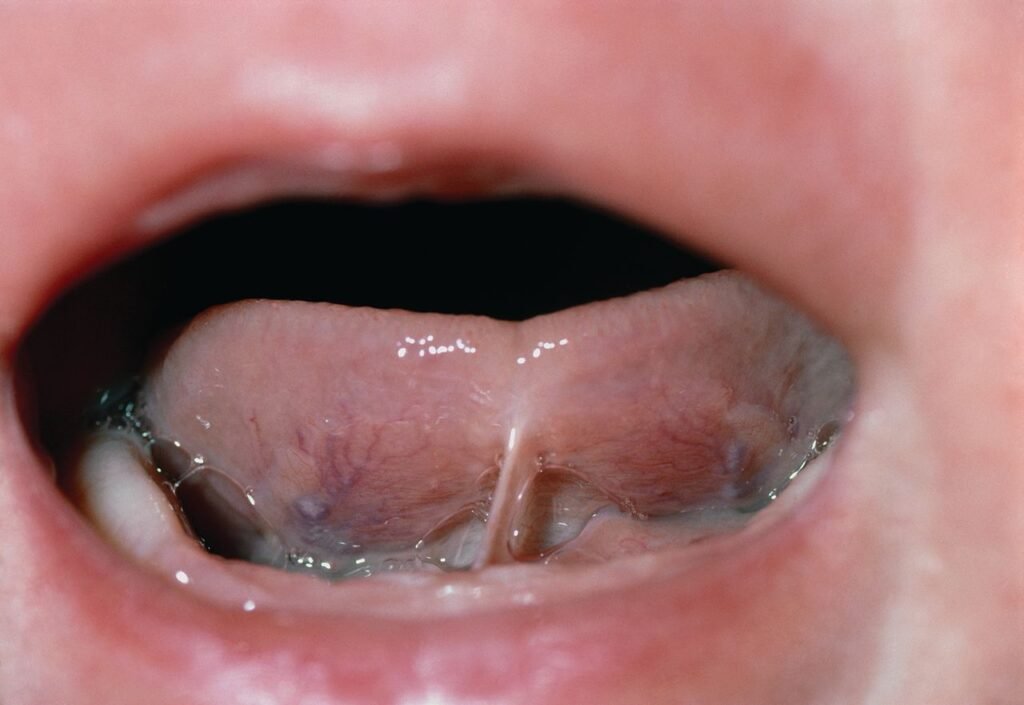Tongue tie, medically known as ankyloglossia, is a condition present at birth where the tissue connecting the tongue to the floor of the mouth is shorter or tighter than normal. This restriction can impact a baby’s ability to feed, speak, or perform basic oral functions. At Cozy T Dental Seremban, we specialize in diagnosing and treating tongue tie to ensure your baby develops properly.
Causes of Tongue Tie

Tongue tie is believed to occur due to genetic factors. While the exact cause is unknown, it tends to run in families. During fetal development, the frenulum (the tissue under the tongue) does not separate completely, leading to the condition.
Common Factors Contributing to Tongue Tie:
- Genetic predisposition
- Lack of tissue separation during development
- Family history of tongue tie
Early identification is crucial to address potential complications.
Symptoms in Babies

Recognizing the symptoms of tongue tie early can prevent feeding difficulties and other developmental issues.
Signs Your Baby May Have Tongue Tie:
- Difficulty latching during breastfeeding
- Slow weight gain due to inadequate feeding
- Clicking sounds while nursing
- Irritability during feeding
- Limited tongue movement (inability to stick out the tongue beyond the lower lip)
- Heart-shaped tongue tip when extended
If you notice these symptoms in your baby, consult a professional at Cozy T Dental Seremban for a thorough evaluation.
Treatment Options in Malaysia

In Malaysia, treatment for tongue tie is accessible and effective. It depends on the severity of the condition and how it impacts feeding or speech development.
Non-Surgical Options:
- Lactation Consulting: Adjusting breastfeeding techniques to improve latching.
- Speech Therapy: Addressing issues if speech is affected in older children.
Surgical Treatment:
When non-surgical options are insufficient, a frenotomy or frenuloplasty may be recommended.
Frenotomy Procedure Details

The frenotomy is a quick, safe, and effective procedure to treat tongue tie. It involves snipping the tight frenulum to release the tongue’s movement.
What to Expect:
- Assessment: A dentist or pediatric specialist evaluates the severity of the tongue tie.
- Procedure: Using sterile tools, the frenulum is cut. This usually takes just a few minutes.
- Recovery: Minimal discomfort; babies often feed immediately after the procedure.
Benefits of Frenotomy:
- Improved breastfeeding latch
- Enhanced tongue mobility
- Reduced speech development issues later in life
At Cozy T Dental Seremban, our experienced dental team ensures a painless and stress-free procedure for your little one.
Why Choose Cozy T Dental Seremban for Tongue Tie Release?
At Cozy T Dental Seremban, we are committed to providing compassionate care for infants with tongue tie. With advanced technology and a skilled team, we prioritize your baby’s comfort and well-being.
Book Your Consultation Today
If you suspect your baby has tongue tie, don’t wait. Early intervention can prevent long-term complications. Contact Cozy T Dental Seremban for a consultation and learn more about our tailored treatment options.


